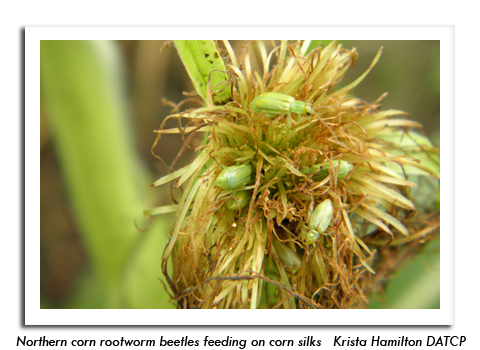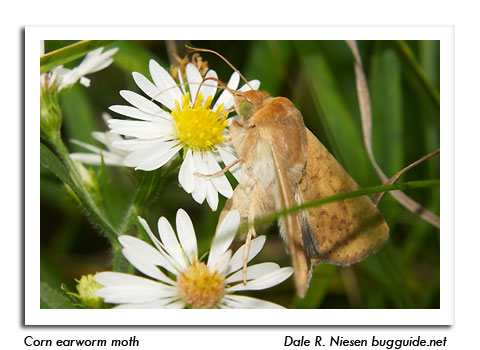
 |
|
|
Corn
Volume 63 Number 14 Date 08/02/2018 WESTERN BEAN CUTWORM - Moth counts increased this week at 12 northern monitoring sites, but decreased or remained unchanged at 43 other locations. Pheromone traps captured a total of 193 moths from July 26-August 1, compared to 228 moths the week before. Counts across southern and central Wisconsin have peaked and should begin to decline soon. Moth emergence is expected to continue in the northern areas for two more weeks. Preliminary results of the 14th annual trapping survey show that the 2018 state count of 503 moths in 55 pheromone traps (9 per trap average) is well below the 2017 cumulative capture of 1,677 moths in 70 pheromone traps (24 per trap average). The highest individual trap total as of August 2 is 78 moths registered near Durand in Pepin County. CORN ROOTWORM - Beetle counts at most sites are low for early August. Corn surveyed in the southern and central districts had averages of 0-0.3 beetles per plant, with most fields having no detectable beetle population. Economic averages of 0.75 or more beetles per plant were not found in any of the recently-sampled fields. The official 2018 corn rootworm survey is scheduled to begin next week. EUROPEAN CORN BORER - The peak in summer moth activity has occurred in the southern and central counties and should be reached by August 10 in the northern counties. The treatment window for second-generation corn borers will remain open for another 1-2 weeks across the southern half of the state. Controls directed against the summer larvae must be applied during the period after egg hatch and before larvae bore into the stalks, prior to the accumulation of 2,100 degree days (modified base 50°F). Degree day totals as of August 1 were: Beloit 1,845 La Crosse 1,989, Madison 1,845, and Hancock 1,659. JAPANESE BEETLE - Silk pruning has become evident along field edges, although at most sites the heaviest feeding is limited to the outer rows and the infestations do not extend into the field interior. Control of this pest in corn is warranted if field-wide populations exceed three beetles per ear and pollination is less than 50% complete. Chemical treatment of entire fields is seldom necessary. Border area spot treatments are usually sufficient for reducing beetles during the critical pollination period. CORN EARWORM - Numbers remained low during the past week. Eleven migrants were registered at five pheromone trap sites, compared to 15 moths captured the previous week. Despite the low counts, the arrival of even a few moths in traps signals that sweet corn producers should begin monitoring fields with green silks. Small larvae were observed this week in corn ears in a field near Bangor in La Crosse County. -- Krista Hamilton, DATCP Entomologist 




|
|
|